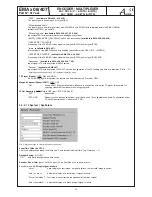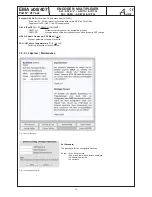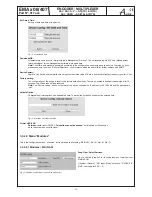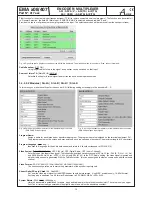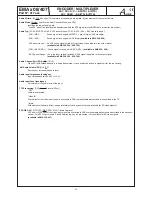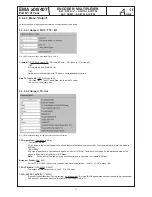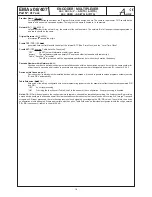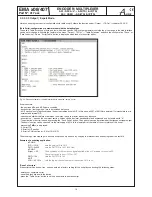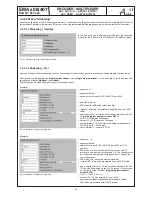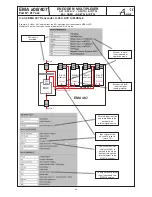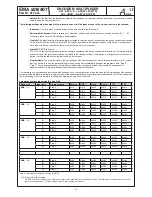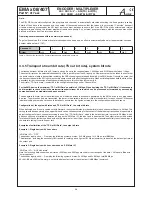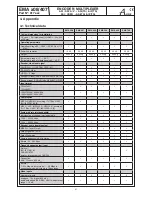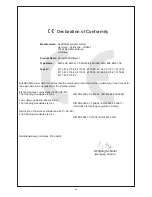
26
EMA x08/407
Part N
o
: 917x.xx
ENCODER/ MULTIPLEXER
ASI / SDI/ A/V
→
ASI(TS) & IP(TS)
ASI / HDMI
→
ASI(TS) & IP(TS)
A
LINE
3.3.4 Detailed configuration (for single and multiple device systems)
Depending on the task and the desired number of channels per DVB transport stream, the devices can be operated individually or in
groups (cascades) of up to 8 devices.
3.3.4.1 The 1-device system
This is the configuration on delivery. Possible detailed configuration options are:
IP address
the default is 192.168.2.86
IP subnet mask
the default is 255.255.255.0
TS ID
the default is die the 5-digit serial number
Provider name
the default is “Provider“
Network ID
the default is “100“
Program name
the defaults are “Prog-A“ ... “Prog-D“
System bit rate
the default is 6,000 kbps
TS out bit rate
the default is 38,000 kbps
All the setting options can be found in section 3.3.2 or on the on-line (internet) help page. The default is 4 channels with standard figures
for the system bit rate. It is possible to change these pre-set bit rates as long as the set “TS Out bit rate” is taken into consideration
(
»
section 3.3.5).
3.3.4.2 The multiple device system (commissioning cascades)
The fact that the EMA devices can be cascaded means that multi-device systems can be created so that DVB transport streams
exist for up to 32 services. Multi-device systems have to be used if more than 4 new services (this means TV programmes with their
additional informations) have to be combined into a transport stream or added to one. If this is done, changes need to be made to the
set parameters for all devices from the HTML pages.
Additionally signal connections ASI-OUT/ IN must be made between the devices using 75-ohms BNC cables. (see Fig. 24).
Fig. 29: Block diagram of a triple cascade (additionally with an external transport stream)
Every device is capable of adding 4 new programs (services) to the existing DVB transport stream as long as there is enough transport
stream capacity or extendibility. If devices have been completely individualised in their basic settings, each new service would be
added as a transponder in its own right. To ensure the newly added services belong together, it is possible to link up to 8 devices in a
logical order to become a single cascade. In this way each of the newly added services is allocated to a transponder.
The following settings must be identical for every device in a cascade, in order to ensure generation of a unique transport
stream:
•
Transport stream identification (TS-ID):
Unique identification of the transport stream is generated. The TS ID can be any
number between 1 and 65,535. However, at the start the TS ID will be the 5-digit serial number of the EMA being initialised.
In the simplest case, the TS ID of the first device should also be entered for all the devices.
IMPORTANT!
In cable networks each TS ID is allowed to appear only once. For this reason, neither the different transport
streams generated by means of the (possibly cascaded) EMA devices nor the transport streams from other program
providers may have the same transport stream ID. The TS IDs of transport streams already existing in the cable must be
known in this context.
•
Cascade within Network:
All devices belonging to a cascade within a single network (a head end) have to be designated
with the same cascade number.
QAM
Upconverter
ASI out
Signal 4 (AV/ SDI)
Signal 8 (AV/ SDI)
Signal 12 (AV/ SDI)
Signal 3 (AV/ SDI)
Signal 7 (AV/ SDI)
Signal 11 (AV/ SDI)
Signal 2 (AV/ SDI)
Signal 6 (AV/ SDI)
Signal 10 (AV/ SDI)
Signal 1 (AV/ SDI)
Signal 5 (AV/ SDI)
Signal 9 (AV/ SDI)
MPEG ENCODER/
Multiplexer 1
TS1
DVB transport stream (max. 214 MBit/s)
Ethernet
ASI out
MPEG ENCODER/
Multiplexer 2
ASI in
ASI main input
TS2
Ethernet
ASI out
MPEG ENCODER/
Multiplexer 3
ASI in
TS3
Ethernet
Data/ configuration (Ethernet)
A
A
A
B
B
B
C
C
C
D
D
D
+

